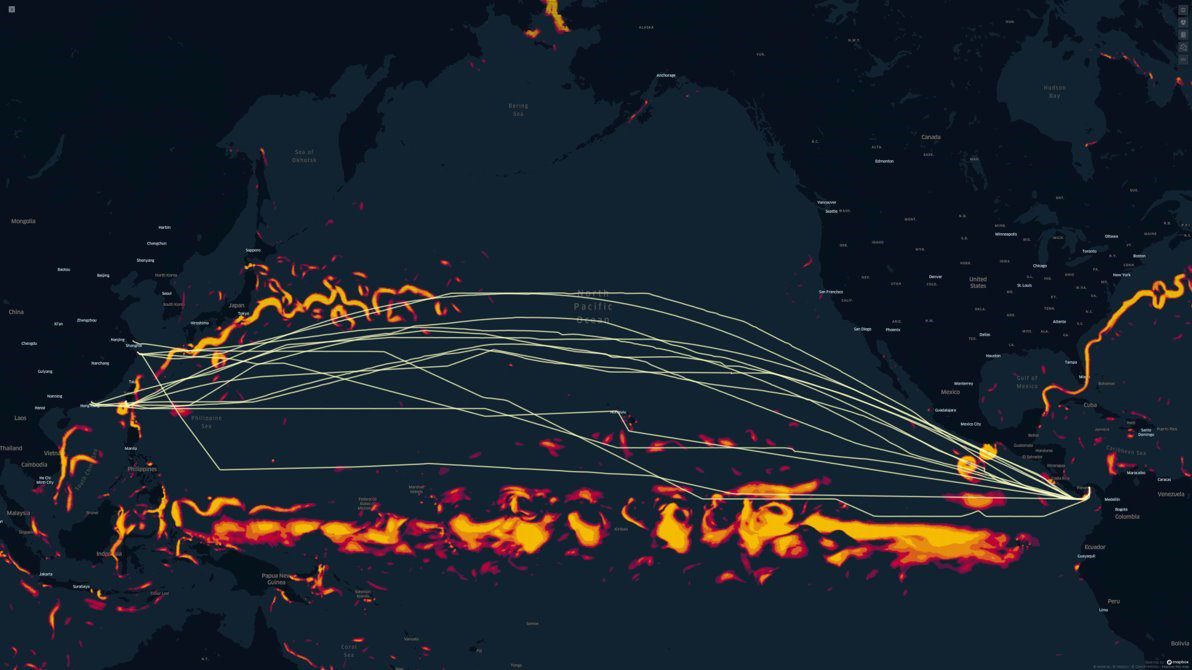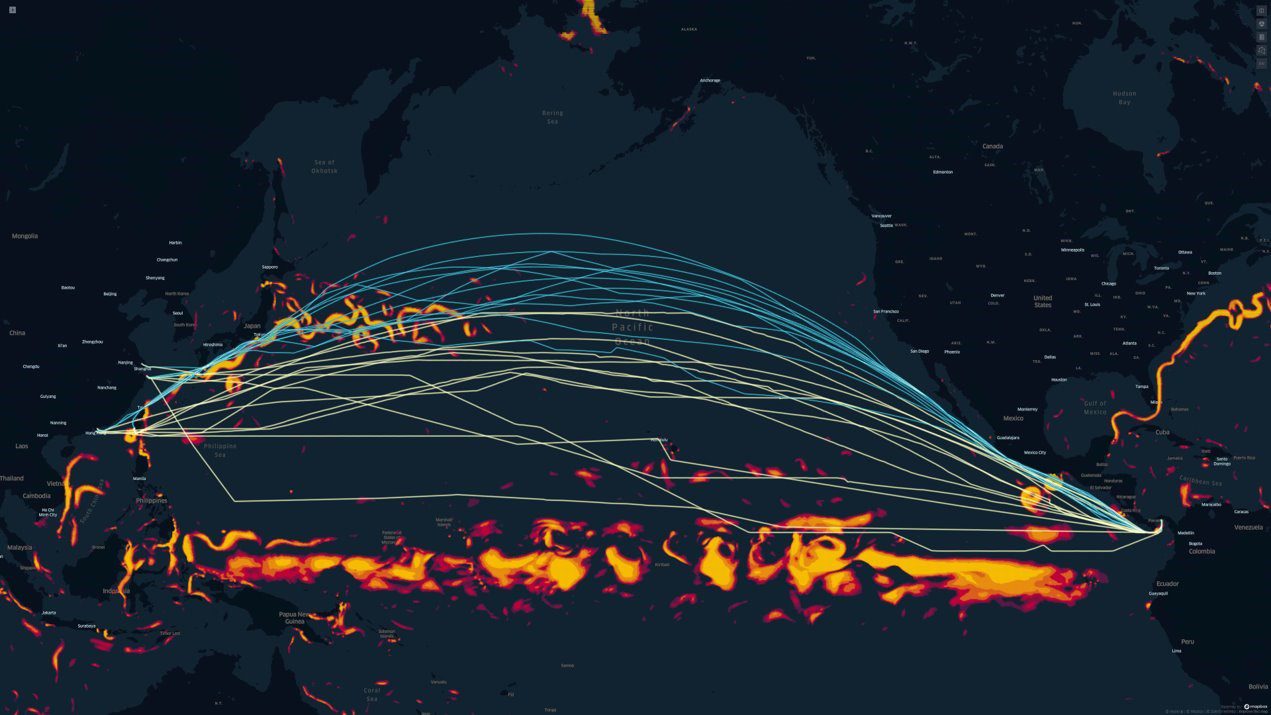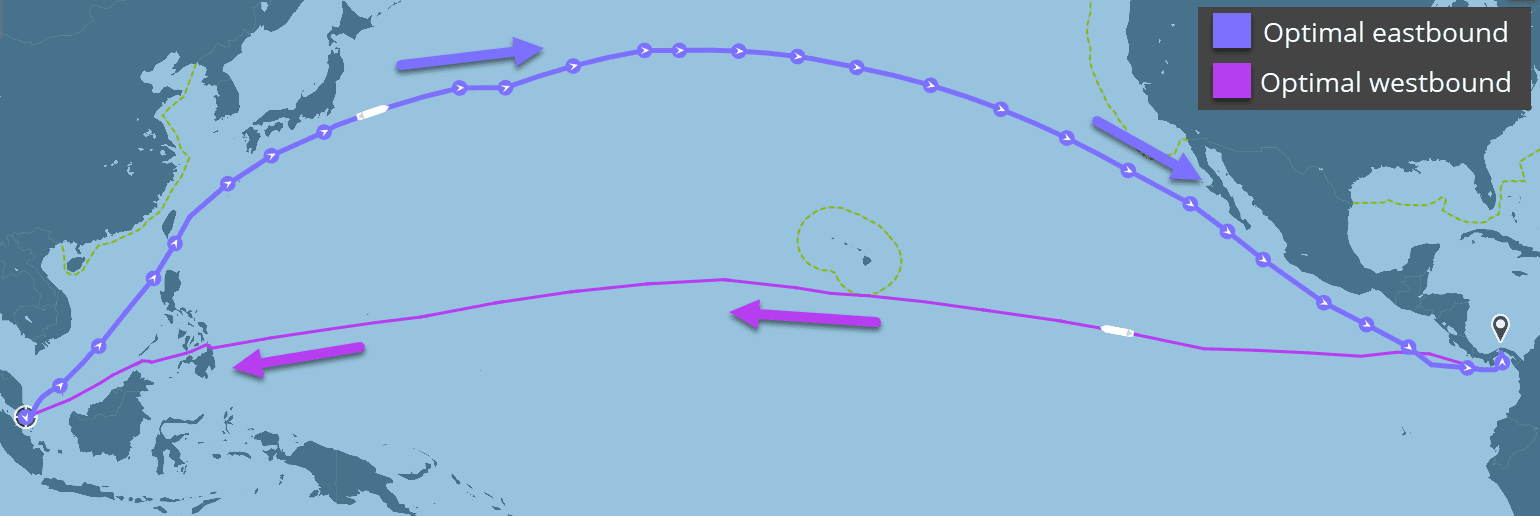April 20, 2021
Surf along with the Kuroshio current on the Pacific
by Kimmo Laaksonen, Director, Product Development, NAPA Shipping Solutions
Ocean currents are relatively stable, so you would think ships know how to take advantage of them or avoid sailing against a strong ocean current, right?
To find out how well ships accounted for currents, we took a year of tanker voyages crossing the Pacific to see how they sail in relation to two specific major currents: the Equatorial current flowing from east to west and the Kuroshio current, also known as Japan current, towards the east. This analysis only includes eastbound voyages from Asia to Panama Canal, using a total 29 tanker voyages.
In our retro-optimization explorations we dove into the data of the global merchant fleet to determine where there would be the most effective potential for better routing.
With the help of the NAPA Performance Models that are available for the whole global merchant fleet we are able to accurately predict the fuel consumption for the route as sailed in the environmental conditions at the time of sailing. Then we retro-optimize to see how the voyage would have been sailed if the ship was utilizing weather routing but keeping the schedules of the original and optimized voyages the same. The retro-optimization method was introduced in more detail in an earlier comparison of MR Tanker voyages on Atlantic crossing.
Favorable currents were wasted?
So, how were the 29 tanker voyages crossing the Pacific eastbound in comparison to the ocean currents? Most of the routes took a path somewhere between the two major Pacific currents. They were avoiding sailing against the westward currents at the equator but staying south of the eastward Kuroshio current.

In comparison, the blue tracks show how a set of respective weather optimized routes would have looked like. The below image shows clearly how just a slightly more northern route would make a huge difference – an average of 18% fuel savings per voyage. In addition to fuel cost savings, the optimized routes would have sailed 2% (or 16 hours) less in heavy weather, BF 5 and higher.

Optimal Pacific routes eastbound and westbound differ significantly
Since the Kuroshio current is flowing towards the east, only eastbound voyages were included in the data analysis. However, it was interesting to compare how different the optimal route plans would look like if a ship would cross the Pacific towards east vs. towards west.
Of course, weather differs greatly at different times, and therefore an optimal route varies for each crossing. However, just looking into the impact of the more stable ocean currents, we compared the optimized routes between Singapore and The Panama Canal eastbound vs. westbound only considering the impact of the sea currents.
Crossing the Pacific westbound, a vessel should take a completely different route to take advantage of the westbound equatorial ocean currents. The optimal westbound route can take even 150-200 nm detour to the south and still be more fuel-efficient due to the current’s pushing force, as you can see in the image below.

This blog post was originally published on LinkedIn on April 19, 2021.
Interested in more tips for better routing?
We’ve collected a guidebook ‘Five tips for better routing’ with insights on safer and more fuel-efficient sea passages.
If you want to explore how much savings potential there would be in voyages in your fleet on your routes, book a demo session with our NAPA Experts.